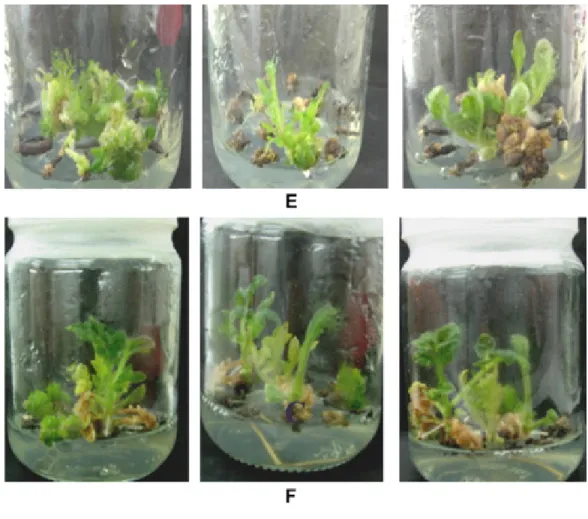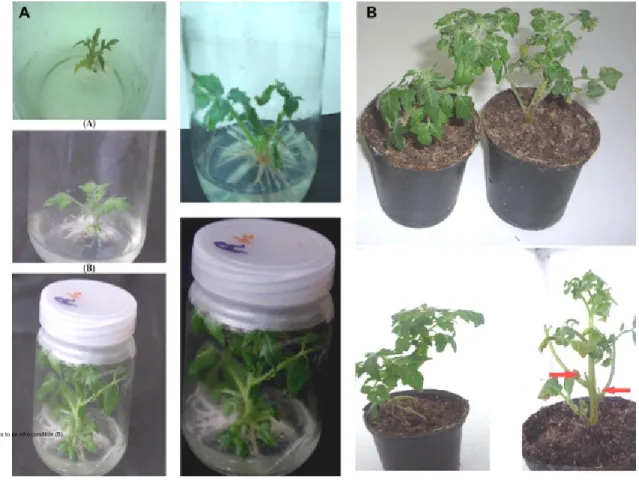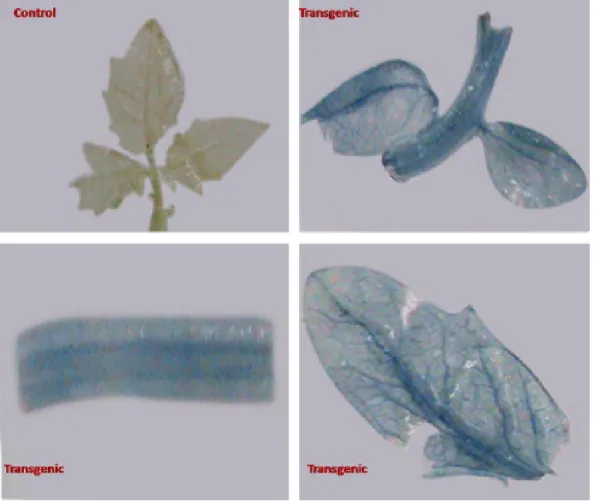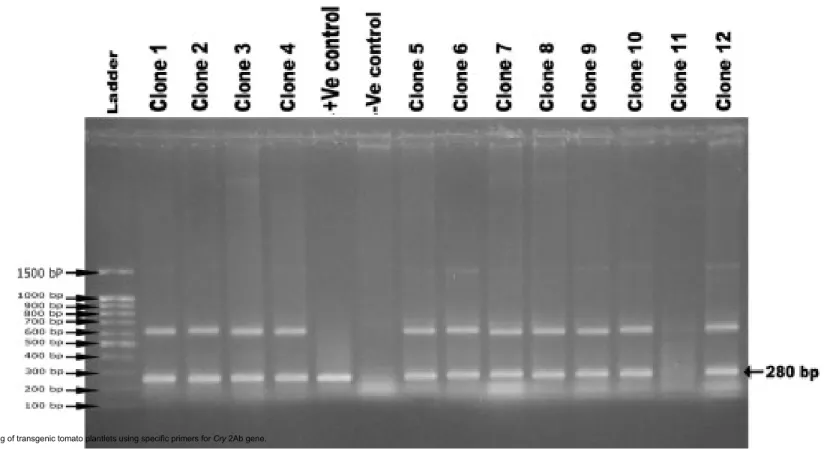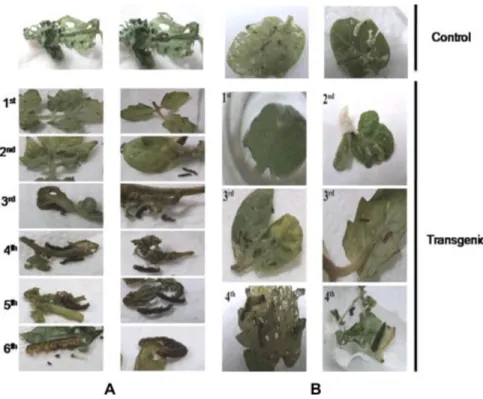Odmiany wyprowadzone z roślin poddanych mutagenezie
Roślina
Odmiana
Mutageneza
ryż
Calrose76
Prom. gamma
pszenica
Above
Lewis
Azydek sodu
Neutrony
owies
Alamo X
Prom. X
grejpfrut
Star Ruby
Neutrony
sałata
Ice Cube
Etylometanosulfonian
(EMS)
Założenie projektów GMO
DNA
RNA
BIAŁKO
Selekcja transformowanych roślin na pożywce z
antybiotykiem
Dwa najpowszechniej używane systemy
modyfikacji genetycznych GMO
Toksyny z Bacillus thuringiensis
Bacillus thuringiensis (Bt) jest Gram-dodatnią bakterią
syntetyzującą kryształy zawierające białka Cry i Cyt, z
których niektóre są toksyczne dla przedstawicieli
licznych rzędów owadów, nicieni oraz ludzkich
komórek nowotworowych. Używa się tych toksyn z
powodzeniem jako bioinsekcytydów przeciwko
Toksyna Bt
Modele toksyny Bt ukazujące różnice (zaznaczone kolorem) w
rejonach wiążących receptory w jelicie owadów, uniemożliwiające
krzyżową odporność na dwie różne toksyny. Cry1Aa jest po lewej
Cry2Aa po prawej.
N-(fosfometylo) glicyna, lepiej
znana jako „glifosat”
(„
glyphosate)”
, składnik aktywny
herbicydu Roundup® . Glifosat
jest silnym inhibitorem jednego
z kluczowych enzymów szlaku
biosyntezy aminokwasów
aromatycznych: tryptofanu,
fenyloalaniny i tyrozyny.
Herbicyd blokuje aktywność synatazy 3
fosforanu 5-enolopirogronoszikimianu
(EPSP), enzymu katalizującego jeden z
etapów prowadzących do chorizmianu,
prekursora wszystkich trzech aminokwasów
aromatycznych.
Rośliny muszą
syntetyzować wszystkie 20
aminokwasów, a więc
blokada chorizmianu
prowadzi do ich śmierci..
Glifosat związany z miejscem aktywnym
EPSP blokuje jej funkcję enzymatyczną
Uodporniająca na glifosat mutacja
(Roundup Ready®) w synatazie C4
EPSP polega na zamianie glicyny na
alaninę w pozycji 100 łańcucha
polipetydowego. Dodatkowa grupa
metylowa alaniny uniemożliwia
prawidłowe wiązanie glifiosatu do
EPSP, ale nie wpływa na normalną
aktywność enzymu.
.Wstępna hodowla roślin transgenicznych w komorach
fitotronowych
Kukurydza z genem Bt (po lewej) i niemodyfikowana (po
prawej) po ataku Ostrinii
Efekt działania szkodników owadzich na bawełnę BT (po
prawej) i niemodyfikowaną (po lewej)
Zakres uszkodzeń kukurydzy korzeni przez
gąsienice
Najważniejsze w światowym rolnictwie
rośliny GMO
Since 2011, the unrestricted commercial cultivation. Alfalfa, mainly grown to feed dairy cows and horses, was developed in genetically engineered form by Monsanto and Forage Genetics, an alfalfa seed company owned by Land O’Lakes.
The plant was engineered to resist contamination of the
herbicide Roundup (produced by Monsanto) and is reportedly the nation’s fourth largest crop by acreage. Today only about one percent of alfalfa is organic.
Used to feed many farmed animal stocks and in food
additives, GMO soybeans
were first planted in 1996 and were being massively
produced by 2007. Almost 95 percent of the soybeans
grown in the U.S. are
genetically modified. Besides soy milk and other soy
products labeled as such, soybeans are a major source of lecithin (E322), commonly
used as an emulsifier in
chocolate, ice cream,
margarine, and
baked goods
Roughly 90% of the U.S. canola crops are modified, also to resist the herbicide Roundup. Despite the fact that the canola plant has been modified, the consumer-friendly oil is considered the
equivalent of a non-contaminated plant according to the Canola Council of Canada.
Technically, the modification of canola only affects one gene and its protein, which is removed during the processing for canola oil.
Roughly 90 percent of
American-grown cotton is
genetically modified. This
very common crop is also
used to create cottonseed
oil which is typically found
in foods like
margarine
and
for animal feed.
Recent studies put the
proportion of GMO corn in
the U.S. at about 88
percent. Bt-corn (named
after the Bacillus
thuringiensis bacterium) is
sweet corn that has been
genetically modified
to
include an insect-killing
gene. Considering that the
U.S is the largest corn
purveyor in the world, it
may be safe to assume
that there are few corn
crops left unmodified
across the globe.
It was originally feared that sugar beets grown from GM seeds would be a risk to other crops. In 2008, the Animal and Plant Health Inspection Service
(APHIS), a division of the USDA
, performed a court-ordered environmental review of the modified seed and determined that there was no risk. Today, approximately 95 percent of the sugar beets grown in the U.S. are modified.
It is
Hawaiian papaya seed
that is genetically
modified, almost all of it.
The first crop of GMO
Hawaiian papaya was
commercially released in
1998. Biotechnology aims
to help protect against
papaya ringspot virus
(PRV).
In 1995, the first variety
of
genetically engineered
yellow squash
; resistant to zucchini
yellow mosaic virus and
watermelon mottle virus
2, was developed by the
Asgrow Seed Co.
Although it is an
approved crop, this
modified crop has barely
caught on. Nestle
believes that only 10% of
approved squash is
labeled as GMO.
Dynie i cukinia (Yellow Summer
Squash and Zucchini)
Złoty ryż
Zawiera
prowitaminę
A
Article Preview
Rice with human genes to be grown in US
10 March 2007
Magazine issue 2594
•
It may sound unappealing, but rather than end up on dinner plates, the
rice will make human proteins useful for treating infant diarrhoea
•
IT SOUNDS unappealing, but
rice containing human genes
is to be
grown in the US. Rather than end up on dinner plates, the rice will make
human proteins useful for treating infant diarrhoea in the developing world.
•
On 28 February, the US Department of Agriculture (USDA) gave a
provisional go-ahead for three types of the rice to be planted over 1300
hectares in Kansas. Developed by Ventria Bioscience of Sacramento,
California, the rice varieties have been given genes that either make the
human breast milk proteins lactoferrin and lysozyme or the human blood
protein albumin.
•
Ventria plans to extract the albumin for industrial use in cell cultures, while
the milk proteins are destined for rehydration drinks used to treat infants
with diarrhoea. Trials on 140 children in Peru show the proteins give
children a better chance of overcoming the condition and help them recover
more than a day faster, compared ...
Nowe projekty
1.
Banany wytwarzające szczepionki dla ludzi (hepatitis
B, inne choroby)
2.
Drzewa owocowe i orzechowe plonujące wiele lat
wcześniej niż obecnie.
3.
Rośliny wytwarzające tworzywa sztuczne o nowych
właściwościach
4.
Ryż ze zwiększona ilością żelaza i witamin
(niedożywienie w krajach 3. świata)
Indukcja reakcji alergicznych
Gen kodujący alergenne białko
Z orzecha brazylijskiego znalazł
się w soi GMO
Potencjalnie negatywny wpływ na środowisko:
geny
mogą się znaleźć w nieoczekiwanych miejscach
• „Ucieczki genów” – problem horyzontalnego transferu genów
• Obawa o przemieszczenie się genów oporności na herbicydy do
chwastów
• Brak danych o skali zjawiska
• Problem realny
Wpływ na organizmy w glebie
Przenoszenie
Oporności na
anty-biotyki
Szkodliwe mutacje
• Czy transgeny mogą zdestabilizować organizm?
• Czy mogą mutować w niepożądanym kierunku?
Ewolucja linii owadów Bt opornych- strategia
zapobiegania
Efekty socjo-ekonomiczne: technologia terminatora
Gen kodujący toksynę pod promotorem specyficznym dla nasiona, ale zablokowany za pomocą fragmentu DNA rozdzielającego promotor i sekwencję kodującą. Sekwencja kodująca rekombinazę pod konstytutywnym
promotorem regulowanym przez represor, który może być zablokowany przez induktor - tetracyklinę.
Sekwencja kodująca represor pod stale dzia-łającym (konstytutywnym) promotorem
nasiono
System powszechnej kontroli
Niebezpieczeństwo mieszania odmian GMO dla zwierząt i ludzi (np.kukurydza
Starlink)
Journal of Genetic Engineering and Biotechnology
Volume 9, Issue 2, December 2011, Pages 149–155
Production of transgenic tomato plants
expressing Cry 2Ab gene for the control of some
lepidopterous insects endemic in Egypt
•M.M. Sakera,
•H.S. Salamab, , ,
•M. Salamac,
•A. El-Bannac,
Larval
instars % Mortality after feeding on different plant clones (mean ± SE)
1st day 2nd day 3rd day 4th day 5th day 6th day 7th day Total (%)
1st 41.70 ± 1.43 (30–54) 50.00 ± 1.73 (36–60) 8.30 ± 3.11 (2–24) – – – – 100 2nd 36.80 ± 1.43 (30–50) 43.60 ± 1.73 (32–62) 18.90 ± 2.52 (8–34) 0.90 ± 0.99 (2–6) – – – 100 3rd 18.30 ± 1.12 (12–30) 31.40 ± 1.42 (24–42) 25.40 ± 0.55 (20–28) 14.60 ± 1.49 (2–24) 4.90 ± 2.87 (10–18) – – 100 4th 15.40 ± 0.90 (10–22) 27.60 ± 1.09 (20–38) 30.10 ± 1.29 (20–40) 22.10 ± 1.67 (4–32) 4.70 ± 2.54 (10–16) – – 100 5th 16.50 ± 0.54 (14–20) 26.90 ± 0.93 (22–34) 32.10 ± 0.99 (24–40) 16.80 ± 0.81 (8–24) 6.30 ± 1.35 (4–16) 0.50 ± 1.11 (4–6) – 100 6th 15.80 ± 1.02 (10–30) 24.90 ± 0.85 (20–30) 29.10 ± 1.34 (20–40) 17.40 ± 1.04 (4–24) 7.70 ± 1.72 (6–16) 3.50 ± 1.42 (4–12) 0.42 ± 1.30 (6–8) 100
P. operculella
Larval
instars % Mortality after feeding on different plant clones (mean ± SE)
1st day 2nd day 3rd day 4th day 5th day 6th day 7th day Total (%)
1st 42.60 ± 0.81 (38–50) 57.40 ± 0.81 (50–62) – – – – – 100 2nd 40.30 ± 1.11 (32–48) 44.00 ± 0.63 (30–60) 15.70 ± 2.61 (12–30) – – – – 100 3rd 31.70 ± 1.30 (24–46) 32.60 ± 0.92 (30–40) 27.60 ± 0.63 (22–30) 8.10 ± 1 .80 (2–20) – – – 100 4th 30.90 ± 1.82 (18–48) 25.90 ± 1.36 (16–40) 26.10 ± 1.38 (12–40) 10.60 ± 3.86 (8–30) 4.4 ± 3. 79 (10–26) – – 100
.
H. armigera.
Larval
instars % Mortality after feeding on different plant clones (mean ± SE)
1st day 2nd day 3rd day 4th day 5th day 6th day 7th day Total
1st 11.80 ± 0.85 (8–20) 13.60 ± 0.73 (8–20) 10.80 ± 0.37 (8–14) 6.50 ± 0 .41 (4–10) 2.70 ± 0 .33 (0–6) 0.80 ± 0 .23 (0–2) 1.20 ± 0 .27 (0–2) 47.30 ± 2.05 (38–62) 2nd 7.00 ± 0.47 (4–10) 11.50 ± 0.74 (8–20) 8.70 ± 0 .57 (4–14) 5.30 ± 0 .33 (4–8) 1.30 ± 0 .30 (0–4) 1.50 ± 0 .29 (0–4) 1.00 ± 0 .23 (0–2) 36.30 ± 1.94 (26–54) 3rd 2.50 ± 0.46 (0–6) 6.00 ± 0 .50 (2–12) 10.10 ± 0.42 (8–14) 5.50 ± 0 .43 (4–10) 2.10 ± 0 .34 (0–6) 1.20 ± 0 .23 (0–2) 0.3 ± 0. 16 (0–2) 27.70 ± 1.52 (20–44) 4th 0.50 ± 0.45 (0–2) 5.70 ± 1 .79 (2–8) 8.00 ± 1 .34 (6–10) 5.10 ± 0 .89 (2–6) 1.60 ± 0 .45 (0–4) 0.40 ± 0 .00 (0–2) 0.60 ± 0 .00 (0–2) 21.90 ± 4.92 (18–32)
